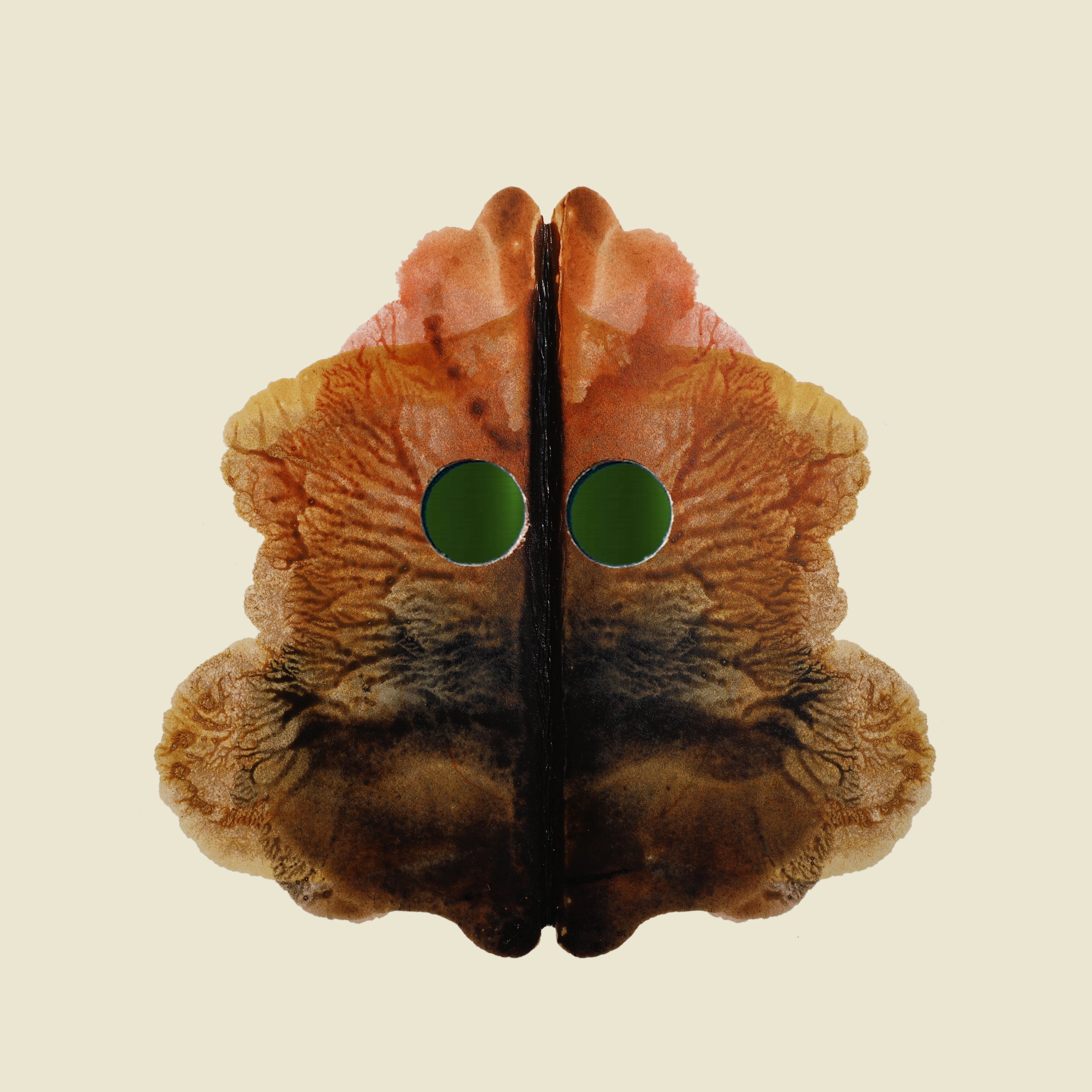Naaljos Ljom - Naaljos Ljom
Catalogue number: MOT13LP
(perspektiv på norsk folkemusikk no. 3)
Release date: September 3d 2021
Sometimes a band appears that has twisted and turned so much on a musical material that it sounds brand new. Though, no one can invent something completely new, it is usually clear that it comes from one place, but just as clear that it is on its way to another. In the middle of this point in the transformation, on this mountain pass between dusty wax roll recordings and strobe-lit nightclub sound systems, we are standing when we hear the debut album of the duo Naaljos Ljom. They are known from noisy bands like MoHa! and Ultralyd with which they have toured over large parts of Europe, as well as parts of the USA, Asia and Australia. Now they have dived into the tonality and rhythm in traditional Norwegian folk music and dressed it up in an electronic dance music costume.
Was it unforeseen that the genre "traditional Norwegian microtonal electronic music" would appear right now? For followers of new interpretations of Norwegian folk music in recent years, the answer is probably no. The tradition is very much alive and never have there been so many practitioners of it as today. And with such a rich musical tradition, it is inevitable that the genre will be the subject of experimentation and further exploration. But, had someone who lived in the folk music scene in the 1920s or 1820s made a time travel and ended up at a hi-fi system here in the 2020s with Naaljos Ljom playing loud, the person in question would probably have shown interest. For the tones and rhythms are largely the same.
The album Anders S. Hana and Morten Joh have screwed together consists of six tracks - five tunes and one song. They are all traditional, taken from the rich folk music archives we have in Norway. Anders Hana has made a great effort in learning both langeleik (droned zither) and mouth harp. He also plays modified electric guitar with microfrets. Morten Joh, with his analog synths, plays both melodies and grooves, and he also seeks to express the magic, that is everything in between the beats, the tones and the phrases. We also need to mention the two brilliant guest musicians, Olav Christer "Laffen" Rossebø on fiddle and Kenneth Lien on vocals.
Naaljos Ljom is particularly inspired by the work Eivind Groven did to maintain the older sense of tonality in Norwegian traditional music. Groven had in-depth knowledge of the Norwegian tradition and theory around pure-tuned intervals and wrote about the it already in the 1920s:
As demands are getting more clear, and we now technically have much better tools to let go of all this tempering (than at the time when they helplessly had to resort to it), then one must believe that it will not be so far in the future before a mechanical instrument is constructed capable of producing perfect just intervals. Construction must be done on the basis of the physical or mathematical workings of pure intervals.
Eivind Groven was able to construct such a mechanical instrument with pure intervals, an organ. But few have come after him. Leaving aside fretless instruments such as the fiddle, voice, and some langeleiks (droned zithers), the even-tempered 12-tone scale still dominates the tonality ground. But now an entire generation is in the process of tuning fixed-pitch instruments and programming computers to generate the pure tuned tones from archive recordings. Here are Naaljos Ljom at the forefront:
By modifying equal tempered instruments to be able to produce these pitches, we have made an attempt to put theory into practice. We have also tried to look at the music from different angles by using other registers, playing the melody in a much slower tempo or using a subdivision grouping other than that of the main beat. This we have in turn mixed with elements of electronic dance music, an idea that is derived from the fact that the traditional music originated as precisely that; dance music.
The main intention of the series "Perspektiv på norsk folkemusikk" is to invite new listeners into the warmth of the Norwegian folk music tradition. The archives are full of amazing material and around the country there are strong performers in centuries-old lines of tradition. This is also Naaljos Ljom aware of:
These are our interpretations based on our musical preferences and there are probably as many ways to do this as there are tones and scales. We hope that it can be an inspiration to others who have thought similar thoughts. If you want to hear the living tradition, then you just have to take a trip to one of the many valleys and fjords where people are keeping the tradition alive.
A new perspective on Norwegian folk music. Traditional Norwegian microtonal electronic music. Or "proper acid folk" as someone said. We give you: Naaljos Ljom!
Perspektiv på norsk folkemusikk is a series on Motvind Records that deals with
different traditions that is characterised by giving us a feeling that they bring out a soulfulness that sheds light over a certain significance by the essence of Norwegian folk music. The purpose of the series is to give people that want to listen to Norwegian folk music a broad selection of expressions that hopefully will inspire to further listening and reflections After Helga Myhr's debut album "Natten veller seg ut" and Thov Wetterhus' hard-hitting "Stålslått", this is the third album in the series. With the combination of unique music and elegant design, we hope that these albums will be sought after collector's items for those who knows that physical format still is the most soothing format.
DETAILS
Recorded and mixed in Stavanger, February 2021 by Anders and Morten.
Mastered by Mike Grinser @Manmade Mastering, Berlin.
Cover art by James Beckett.
Screen printing by Dridmachine.
Layout by JAHJAH Studio.
Rose painting by Knut Buen.















